

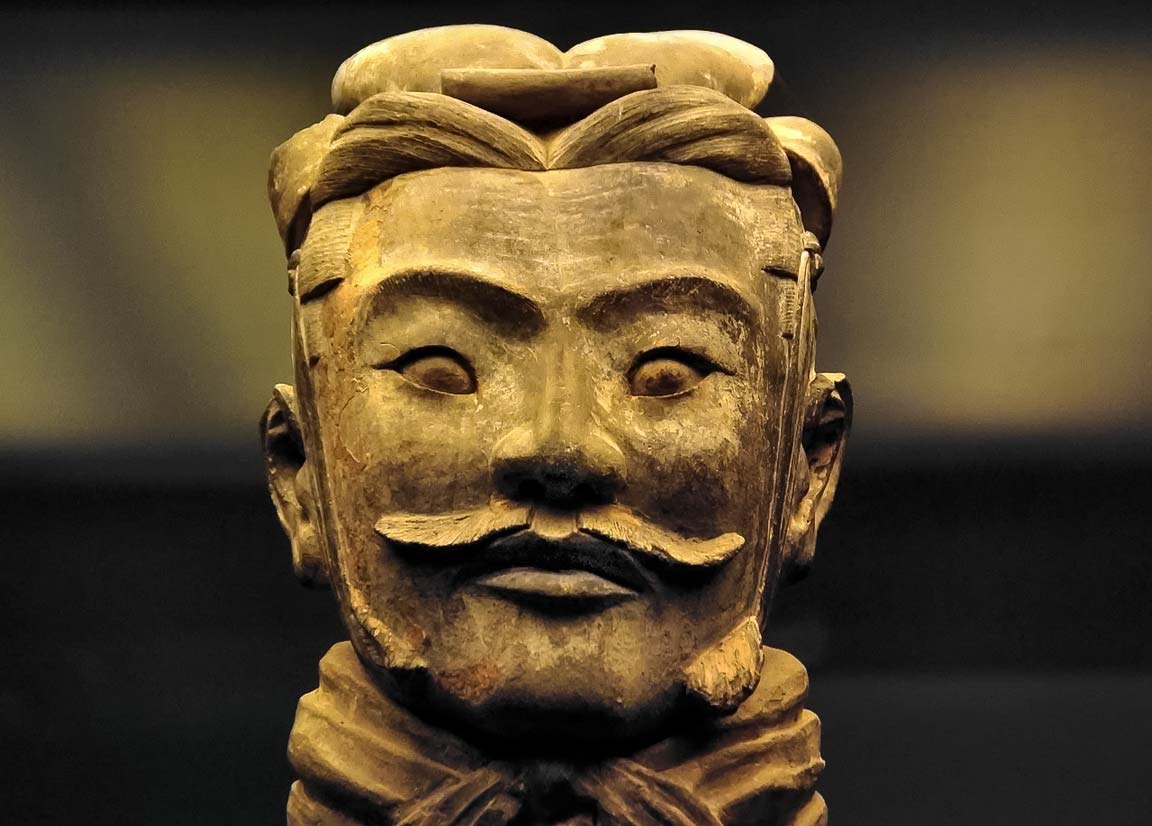
In this article, we will delve into some fascinating facts about the Terracotta Army, one of the most extraordinary archaeological discoveries of our time. From its accidental discovery to the unique features of its terracotta soldiers, we will explore interesting facts about this ancient wonder that has captivated the world for decades. So, let’s dive in!
In the heart of China, tucked away in the city of Xi’an, lies one of the most extraordinary archaeological discoveries of our time – the Terracotta Army. This ancient wonder, hidden beneath the earth for over two millennia, was stumbled upon purely by chance. Its accidental unearthing in 1974 by a group of local farmers astonished the world and opened a gateway to a fascinating chapter in Chinese history!
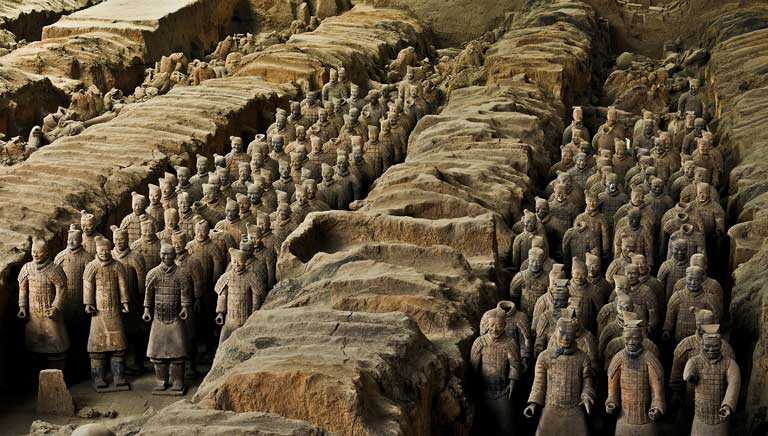
What’s truly astonishing is that prior to this accidental discovery, there were no historical records or written accounts mentioning the existence of the Terracotta Army. It lay hidden, shrouded in mystery, and forgotten by the depths of time. This lack of historical evidence only heightened the intrigue surrounding this extraordinary find.
As the excavation progressed, archaeologists were met with a breathtaking sight – an army of terracotta soldiers, each one unique with its own distinct clothing, hairstyle, and facial features. It was like unlocking a time capsule that preserved the essence of individuality from an ancient era. The level of craftsmanship displayed in these figures was a testament to the artistic skill of the artisans who created them.
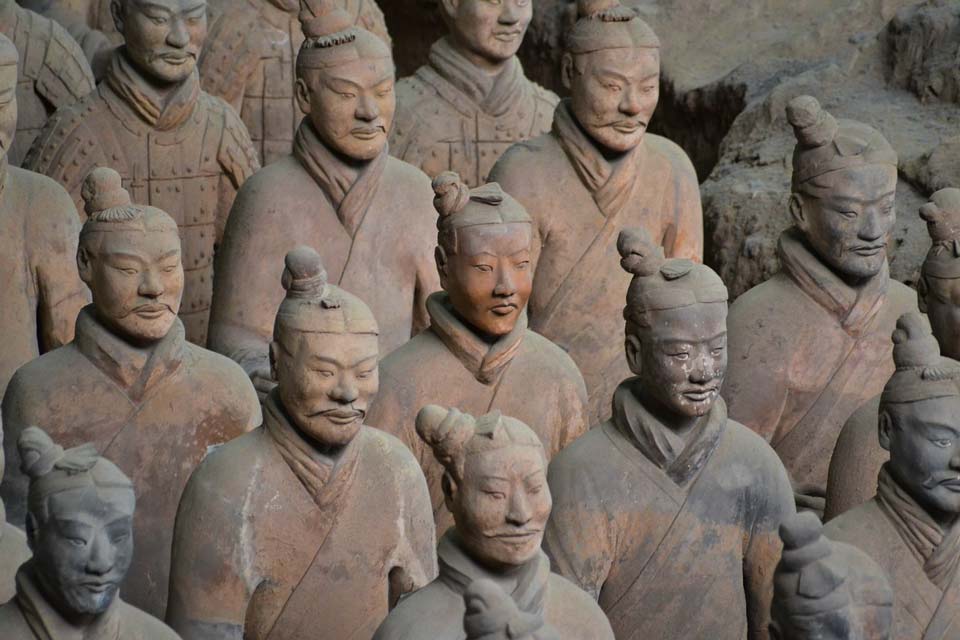
So, why were these terracotta soldiers created in the first place? It was all part of Emperor Qin Shi Huang’s ambitious quest for immortality. The emperor believed that in the afterlife, these terracotta warriors would serve and protect him, ensuring his eternal life. To achieve this grand vision, he commissioned the construction of a vast tomb complex that would rival anything seen before.
The Terracotta Army is not just about soldiers alone. Among the ranks of the terracotta figures, one can find acrobats, musicians, and even waterfowl. These figurines, like loyal companions, accompanied Emperor Qin Shi Huang to the afterlife, adding to the grandeur of his eternal journey.
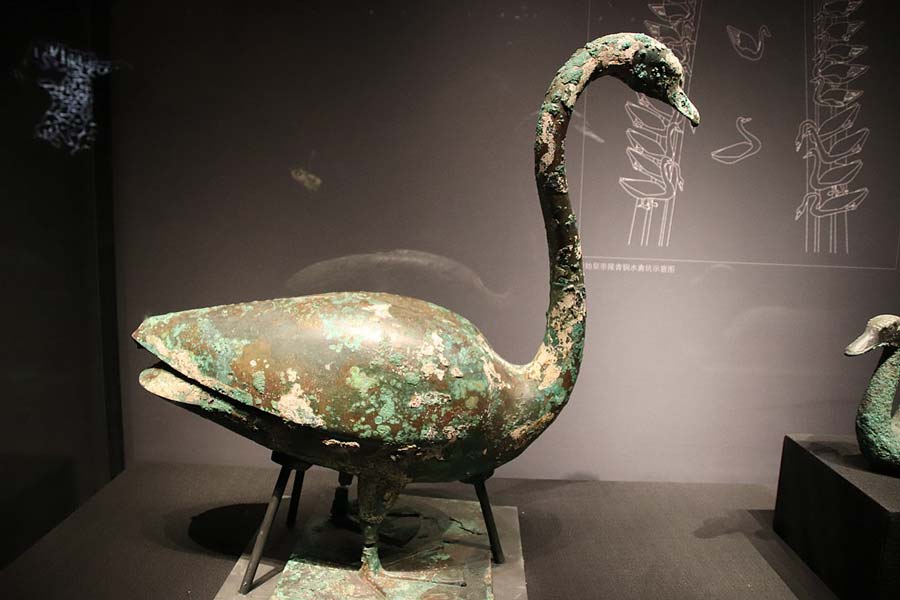

One of the most remarkable aspects of the Terracotta Army is the early example it provides of mass-production. Each terracotta warrior was carefully crafted using standardized molds for different body parts. This pioneering method allowed for efficient production, turning the mausoleum into a vast assembly line of art and history.
When first unearthed, the terracotta warriors were a sight to behold, adorned with vibrant colours painted on their clothes and armor. However, unfortunately, their exposure to the air caused the pigments to fade over time, leaving these once-colourful figures in their current earthen hues.

What’s even more awe-inspiring is that the terracotta warriors were equipped with real, unused weapons made of bronze. Swords, spears, and crossbows adorned their hands, standing as a testament to the sophistication of ancient Chinese metallurgy and craftsmanship.
Emperor Qin Shi Huang, who ascended to the throne at the young age of 13, initiated the construction of his tomb complex early in his reign. This ambitious project marked the beginning of a lifelong endeavor to create a mausoleum fit for an emperor.

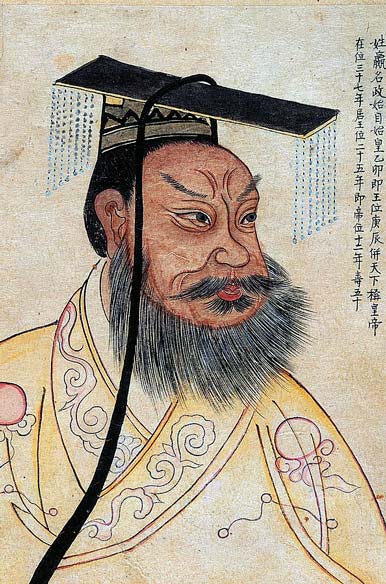
The scale of the Terracotta Army project was staggering. Over 700,000 laborers worked diligently to create this monumental army and the entire tomb complex. The vast workforce was a testament to the importance and grandeur that the emperor attached to his afterlife.
Building an army of terracotta soldiers and constructing an awe-inspiring tomb complex takes time and dedication. The construction of the Terracotta Army and the mausoleum spanned approximately 38 years, a testament to the patience and vision of Emperor Qin Shi Huang.
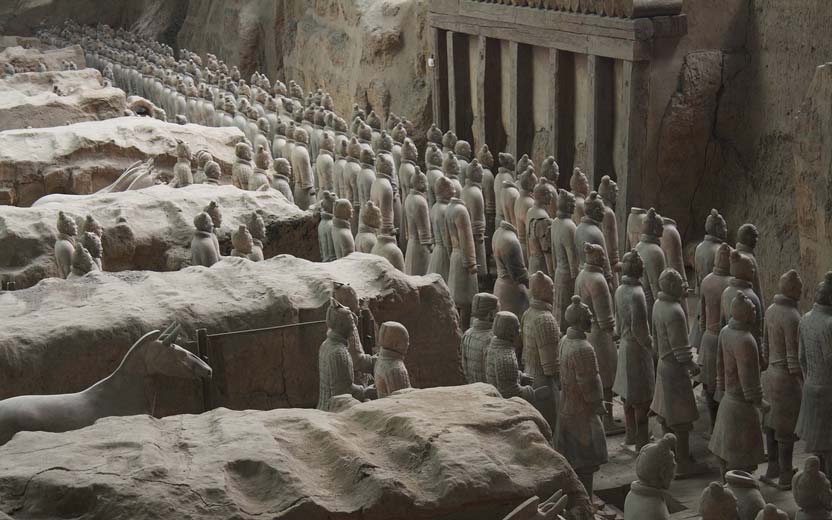
After completion, the Terracotta Army and the tomb complex remained untouched for over 2,200 years. The site stood as a hidden gem, preserving the legacy of an ancient empire and its ruler.
Archaeologists estimate that the Terracotta Army consists of more than 8,000 soldiers, 130 chariots, and 670 horses. These countless figures are arranged in military formations, reflecting the actual battle tactics of the Qin army.
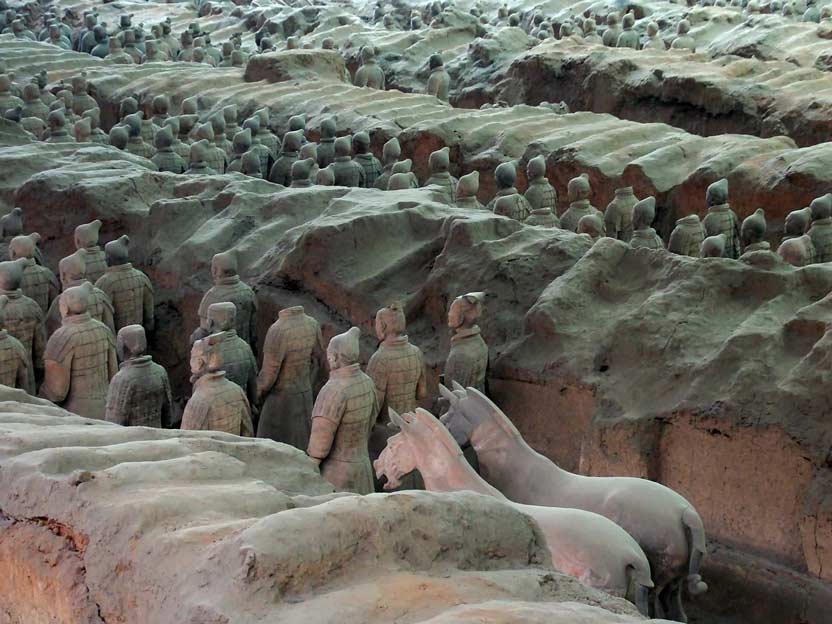
Most of the terracotta soldiers were found in three main pits within the tomb complex. Each pit housed different formations of soldiers, giving us a glimpse into the strategic brilliance of ancient Chinese warfare.
The average height of the terracotta warriors stands around 1.85 meters (6.07 ft). This corresponds to the average height of male soldiers during the Qin dynasty, although there are some soldiers who are shorter and some who reach the impressive height of 2 meters (6.5 ft) this fact shows that the artisans were dedicated to making each soldier unique and special in their own ways.
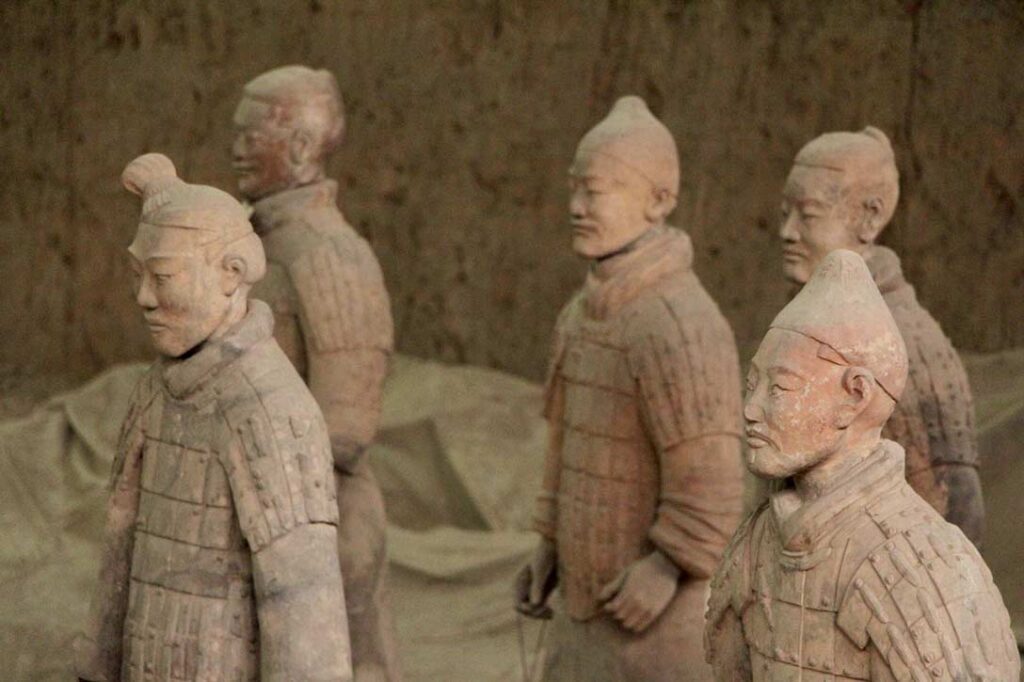
Jacques Chirac, the former President of France said in 1987, “There were Seven Wonders in the world, and the discovery of the Terracotta Army, we may say, is the eighth miracle of the world. No one who has not seen the pyramids can claim to have visited Egypt, and now I’d say that no one who has not seen these terracotta soldiers can claim to have visited China.”
He said this after visiting China. Chirac was impressed by the scale and craftsmanship of the army, and he compared it to the Seven Wonders of the World. He said that the Terracotta Army was a “miracle” and that it was essential for anyone visiting China to see it.
In 1987, the Mausoleum of the First Qin Emperor, including the Terracotta Army, received UNESCO World Heritage Site status. This recognition emphasizes the site’s global importance and the need for its preservation.

Among the many weapons discovered among the terracotta warriors, some were made of bronze and remained sharp even after thousands of years. This showcases the amazing advancements of the Qin dynasty.
The Terracotta Army site has become one of China’s most popular tourist destinations. More than 1 million visitors every year from all corners of the world come to marvel at the ancient legacy and immerse themselves in the rich history of this grand empire.
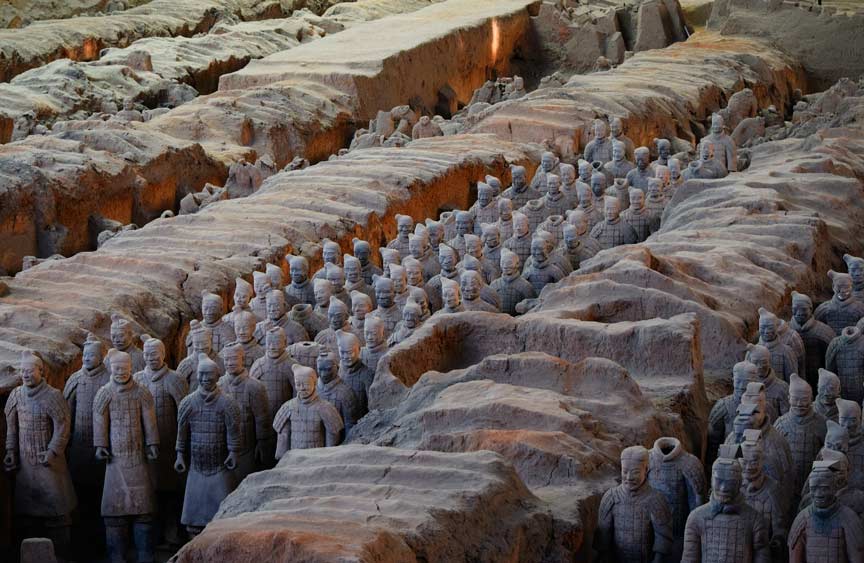
The tomb of Emperor Qin Shi Huang, the grand mastermind behind the creation of the Terracotta Army, remains a mystery to this day. Despite extensive excavations in and around the mausoleum complex, the actual burial chamber of the First Emperor has never been opened. Some people believe the reason behind this deliberate preservation lies in the belief that disturbing the tomb might trigger an ancient curse or bring ill fortune. Others believe it’s due to the lack of funding, but the most likely reason behind the preservation of this tomb is that if archaeologists were to excavate the tomb the secret relics within would perish as soon as they are exposed to air.
The meticulous arrangement of the terracotta soldiers in military formations reflects the actual battle tactics employed by the Qin army. These strategic formations were vital to the success of the ancient Chinese military.

The Terracotta Army is not just an archaeological wonder; it’s a testament to the brilliance of ancient Chinese civilization. Its accidental discovery may have been by chance, but the journey of exploration and understanding that followed has enriched our knowledge of history. The individuality of each terracotta soldier, the ambition of Emperor Qin Shi Huang, and the grandeur of the tomb complex all speak of an empire that left a lasting mark on the records of history.
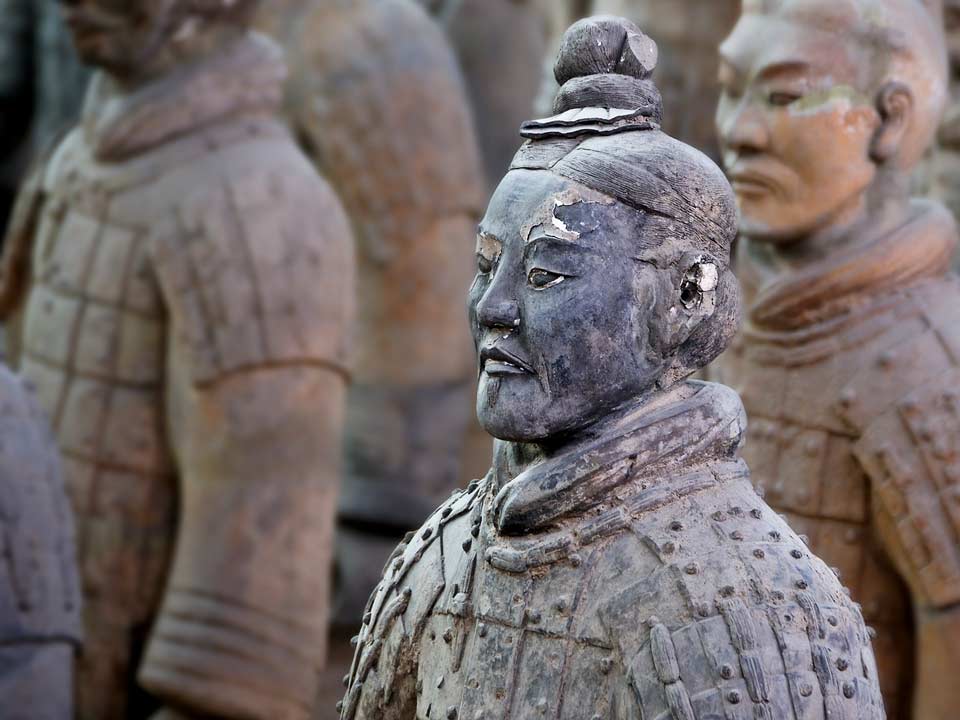
Related Articles:
Xi’an FAQs: Exploring China’s Ancient Capital City!
18 Qin Shi Huang Facts! [Explained]
Exploring the 6 UNESCO World Heritage Sites in Xi’an!
The Terracotta Army: Exploring a Wonder of Ancient China!
UNESCO World Heritage Sites: The Ultimate Guide!
China’s UNESCO World Heritage Sites: A Complete A-Z List!